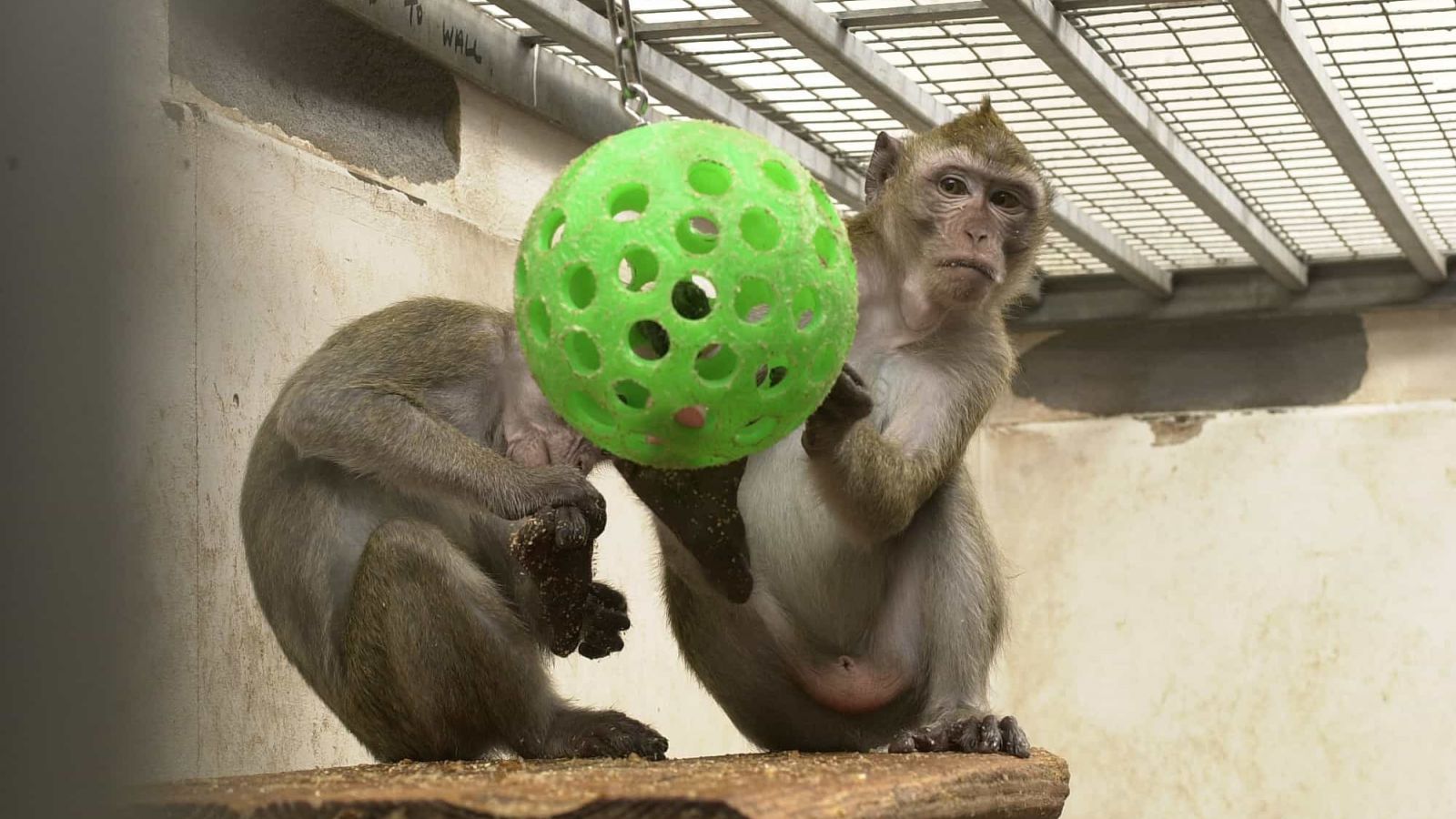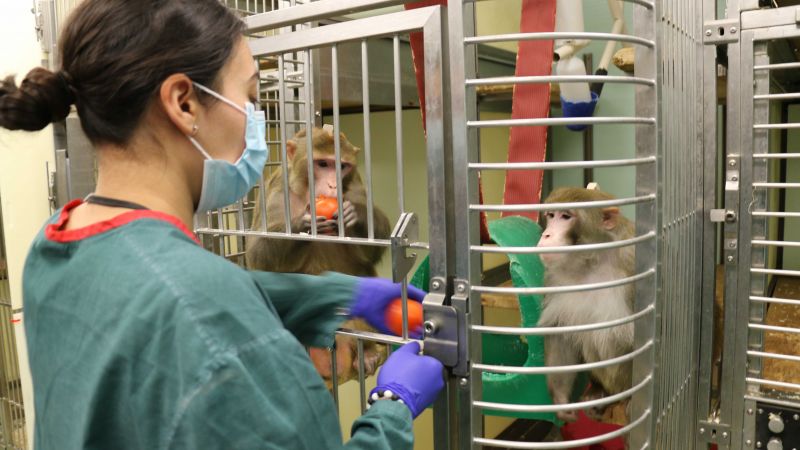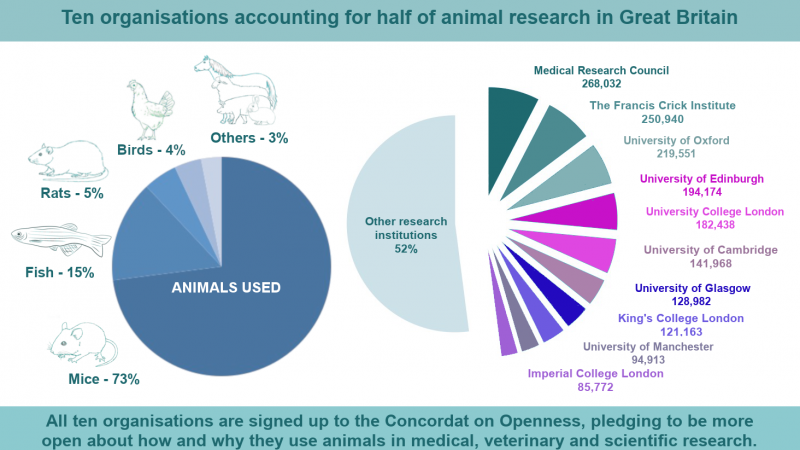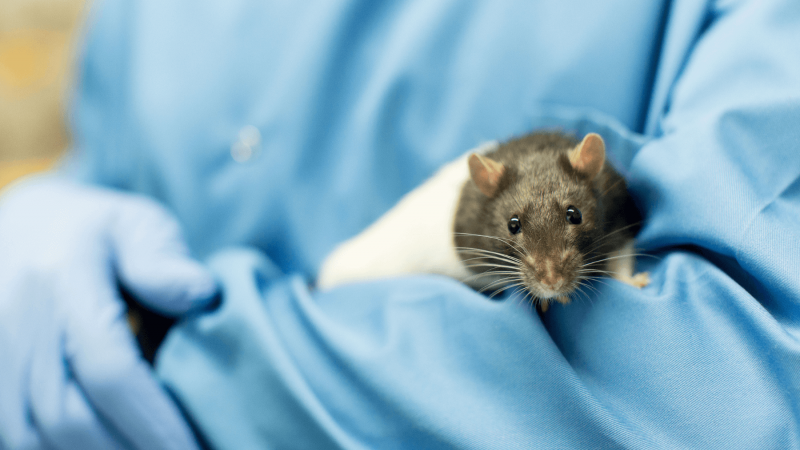In recent years the use of monkeys in European research has been steadily declining. Most recently, a UK government report noted the number of primate experiments had fallen for the third consecutive year. Researchers suspect that a combination of increasing regulatory pressure, rising costs, and disapproval among the public are responsible. Some countries, such as the Netherlands and Belgium, have even taken political measures to deliberately scale back on primate research.
Whatever the reasons for the decline, the research community should continue to support all efforts to reduce the numbers of non-human primates used in research while refining the life experience of the animals involved.
Primate research into heart disease
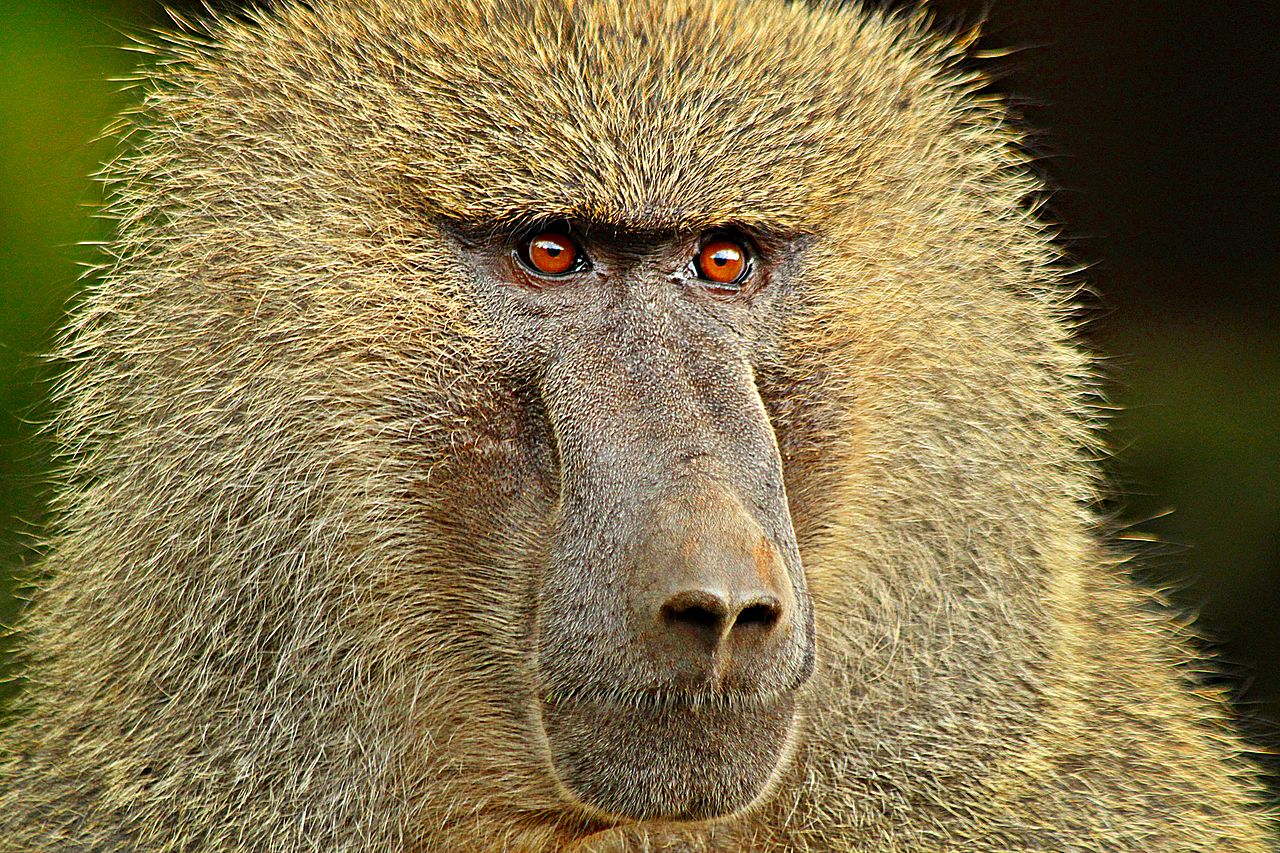 The most recent example is taking us a step closer to transplanting pig hearts into humans. After successful trials in baboon, researchers from Germany, Sweden and Switzerland are hoping that clinical trials of pig organs in humans could begin in as little as three years. This was not the first time pig organs, including hearts, had been transplanted into monkeys. Previous work has showed that a pig heart can function for more than two and a half years when transplanted into the abdomen of a baboon – although the baboon kept its own heart to pump blood around its body. This work has obvious significance in a world where people are dying because there are not enough human organs to transplant.
The most recent example is taking us a step closer to transplanting pig hearts into humans. After successful trials in baboon, researchers from Germany, Sweden and Switzerland are hoping that clinical trials of pig organs in humans could begin in as little as three years. This was not the first time pig organs, including hearts, had been transplanted into monkeys. Previous work has showed that a pig heart can function for more than two and a half years when transplanted into the abdomen of a baboon – although the baboon kept its own heart to pump blood around its body. This work has obvious significance in a world where people are dying because there are not enough human organs to transplant.
In another development with potential for treating heart disease American researchers used gene-editing tools in adult monkeys to disable a gene throughout much of the liver. This approach lowered blood cholesterol levels. The study could also pave the way for treating certain genetic diseases caused by a defective, damage-causing protein. Previously researchers in China have used CRISPR DNA scissors in monkey embryos to produce animals with modified genomes for studying diseases. Many other gene-editing tools are currently being tested, however, so it is too early to tell which of those approaches will be used in people.
The battle against viruses
This year was also marked by impressive progress towards an HIV vaccine. Despite enormous efforts over more than 30 years that have led to life-saving treatments for HIV/AIDS, researchers have yet to develop either a vaccine or cure for the disease; but they have made progress in monkey experiments. Several AIDS vaccines have had some success in monkey models, which typically use SIV, a simian cousin of HIV that causes AIDS in rhesus macaques.
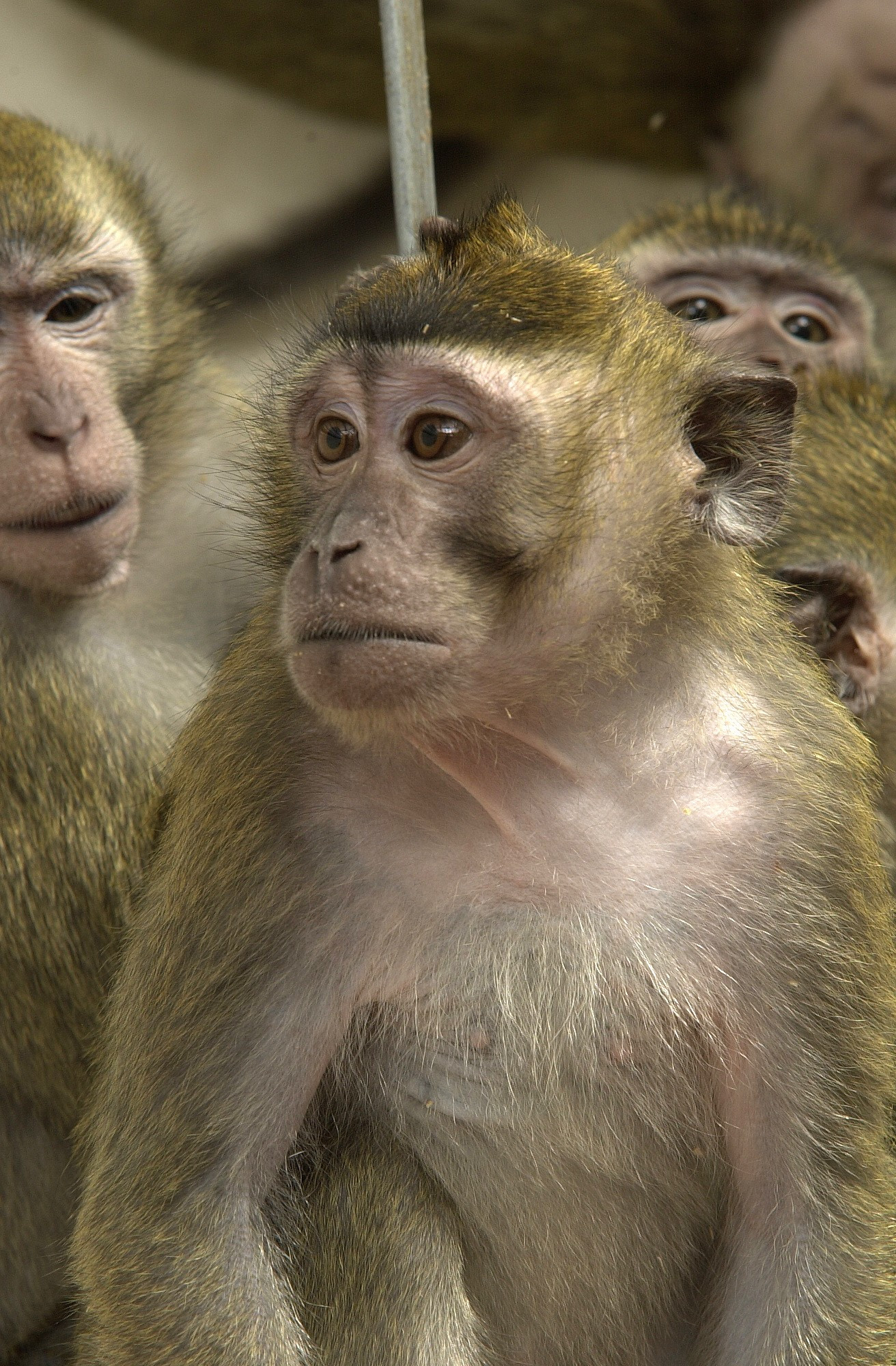 One vaccine has long stood out from the pack. Designed by Louis Picker and American colleagues, the vaccine stitches SIV genes into a harmless Trojan horse, cytomegalovirus. Picker’s team has given the vaccine to more than 200 monkeys and then “challenged” them with injections of a particularly nasty strain of SIV. 55% of the animals became temporarily infected and then completely controlled the virus for years or even cleared it from their system completely. However, the team have yet to nail down the immune responses that explain the vaccine’s success, and they also cannot explain why it frequently fails. This year, American immunologist Michael Gale Jr. identified 234 genes that could predict with 91% accuracy whether the vaccine injection would protect an animal, offering new ways to modify vaccines against HIV.
One vaccine has long stood out from the pack. Designed by Louis Picker and American colleagues, the vaccine stitches SIV genes into a harmless Trojan horse, cytomegalovirus. Picker’s team has given the vaccine to more than 200 monkeys and then “challenged” them with injections of a particularly nasty strain of SIV. 55% of the animals became temporarily infected and then completely controlled the virus for years or even cleared it from their system completely. However, the team have yet to nail down the immune responses that explain the vaccine’s success, and they also cannot explain why it frequently fails. This year, American immunologist Michael Gale Jr. identified 234 genes that could predict with 91% accuracy whether the vaccine injection would protect an animal, offering new ways to modify vaccines against HIV.
In another promising study American scientists tested various combinations of a mosaic vaccine in people who did not have HIV and were healthy. All of the vaccine combinations produced an anti-HIV immune system response and were found to be safe. The scientists also carried out a parallel study where they gave rhesus monkeys the vaccine to protect them from SIV. The mosaic vaccine combination that showed the most promise in humans was found to protect 67% of the 72 monkeys tested from getting the disease.
In another study american researchers infected 44 monkeys with a hybrid of SIV and HIV called SHIV. After treating all the animals with different anti-retrovirals (ARVs) for 2 years and then stopping, the monkeys that had received a drug that binds to toll-like receptor 7 (TLR7) and a potent HIV antibody that studs innate immune system cells showed very encouraging results as the SHIV didn’t return in the animals after 6 months. This research is still continuing.
The production of as many as 1,000 doses of an experimental whole-virus vaccine against Ebola that has already been proven to work safely in monkeys is underway.
One more example is in the fight against the Zika virus. In a recent study, a first of its kind to really show how pathogenic Zika can be in infants, while the devastating developmental damage that Zika infection can cause when children are infected in the womb is abundantly clear, the question remains: what about babies infected shortly after birth? To gain some insight, researchers infected infant rhesus macaques with Zika virus after they were born, and observed that monkeys have abnormal brain development and display atypical behaviour at six months of age.
Primate research benefiting neuroscience
And last but not least among the most remarkable stories of this year regarding non-human primate research is the study of the brain and the spinal cord. Unsurprisingly, non human primates and humans have very similar brains and neural networks, making monkeys a useful model to understand how the brain functions and to study neuro-degenerative disorders such as Parkinson’s or Alzheimer’s disease.
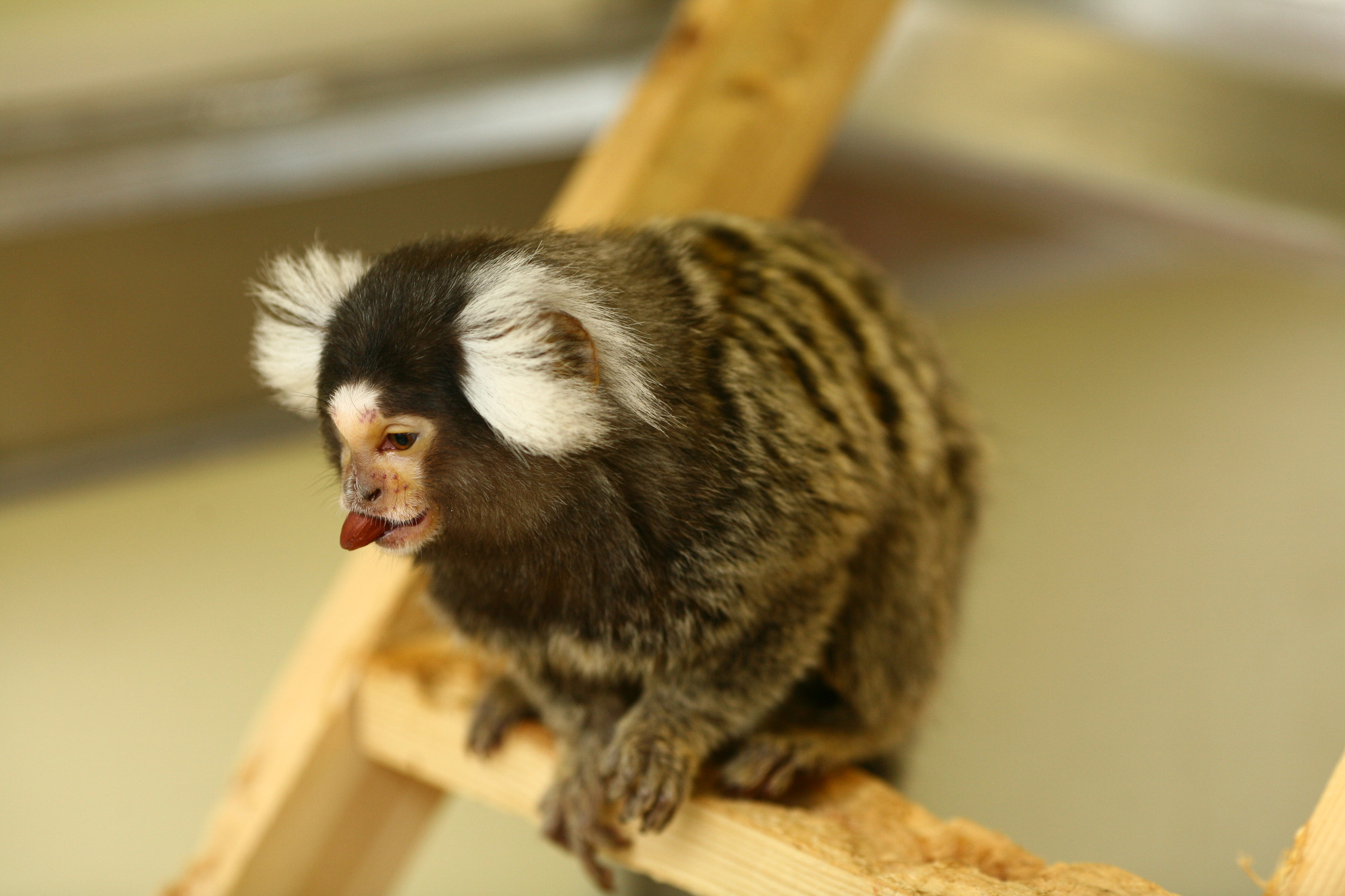 This year, researchers at the Texas Biomedical Research Institute have identified a new Marmoset animal model that mimics the sleep disturbances, changes in circadian rhythm, and cognitive impairment seen in people with Parkinson's disease. This nonhuman primate model mimics additional various types of tremors, such as action tremor, rest and postural tremors, as well as cognitive deficits, sleep and circadian rhythm disturbances and side effects of drug treatment, such as the involuntary movements known as dyskinesia that appear after long-term L-dopa therapy. Thanks to these new models, it is possible to take Parkinson’s research one step further. In China this year for example, scientists report improvements in the motor abilities of monkeys with Parkinsonian symptoms after grafting dopamine neurons derived from embryonic stem cells (ESCs) into their brains. The stem cell–derived transplants were stable for 24 months and led to wide-ranging behavioural improvements in the monkeys. The findings will serve as preclinical data for China’s first ESC-based clinical study for the neurological disease.
This year, researchers at the Texas Biomedical Research Institute have identified a new Marmoset animal model that mimics the sleep disturbances, changes in circadian rhythm, and cognitive impairment seen in people with Parkinson's disease. This nonhuman primate model mimics additional various types of tremors, such as action tremor, rest and postural tremors, as well as cognitive deficits, sleep and circadian rhythm disturbances and side effects of drug treatment, such as the involuntary movements known as dyskinesia that appear after long-term L-dopa therapy. Thanks to these new models, it is possible to take Parkinson’s research one step further. In China this year for example, scientists report improvements in the motor abilities of monkeys with Parkinsonian symptoms after grafting dopamine neurons derived from embryonic stem cells (ESCs) into their brains. The stem cell–derived transplants were stable for 24 months and led to wide-ranging behavioural improvements in the monkeys. The findings will serve as preclinical data for China’s first ESC-based clinical study for the neurological disease.
The use of stem cells isn’t only useful against Parkinson’s disease. A recent study has shown that Stem Cell implants improve monkeys’ grip after spinal cord injury. Human neural stem cells transplanted into the injured spines of monkeys matured into nerve cells, spurring neuronal connections and giving the animals an improved ability to grasp an orange. Up to this point, most of the work on transplanting neural stem cells had been done in rats. This is the first study to show the treatment can be successfully scaled up to primates.
The future of primate research
2018 has been a remarkable year for primate research, with a few first time studies and some concrete translations to humans. So what are we to expect in the years to come? No doubt continued progress in making vaccines to protect against diseases such as HIV and also further steps towards the promise of using cells to repair the damage of accidents and old age.
REFERENCES
https://www.the-scientist.com/news-opinion/gene-editing-reduces-monkeys-cholesterol-64470
https://www.sciencemag.org/news/2018/07/gene-edited-monkeys-offer-hope-heart-disease-patients
http://science.sciencemag.org/content/343/6170/476.full
http://www.sciencemag.org/news/2011/05/unusual-aids-vaccine-shows-promising-results-monkeys
https://news.wisc.edu/ebola-vaccine-inches-toward-human-clinical-trials/
https://www.laboratoryequipment.com/news/2018/09/starring-role-nonhuman-primates-stem-cell-story
https://edition.cnn.com/2018/12/04/health/fda-research-monkeys-retire-sanctuary-eprise/index.html
https://www.nc3rs.org.uk/news/ucl-scientists-develop-welfare-friendly-method-training-macaques
https://www.sciencemag.org/news/2018/10/why-are-us-neuroscientists-are-clamoring-marmosets
https://www.sciencemag.org/news/2018/11/record-number-monkeys-being-used-us-research
https://www.sciencemag.org/news/2018/10/why-are-us-neuroscientists-are-clamoring-marmosets
Last edited: 29 July 2022 10:12

